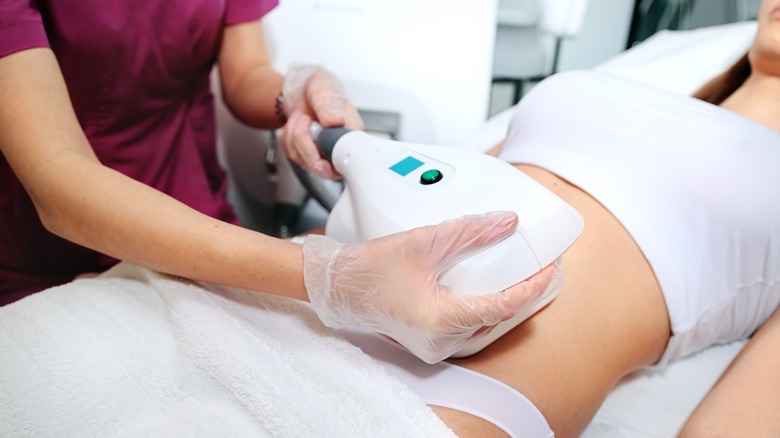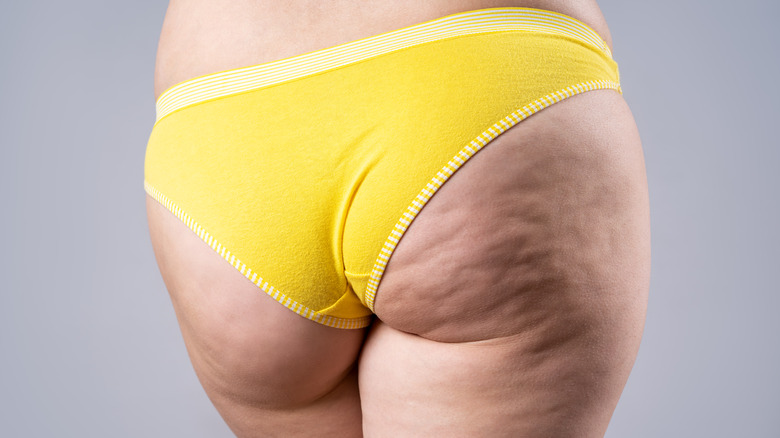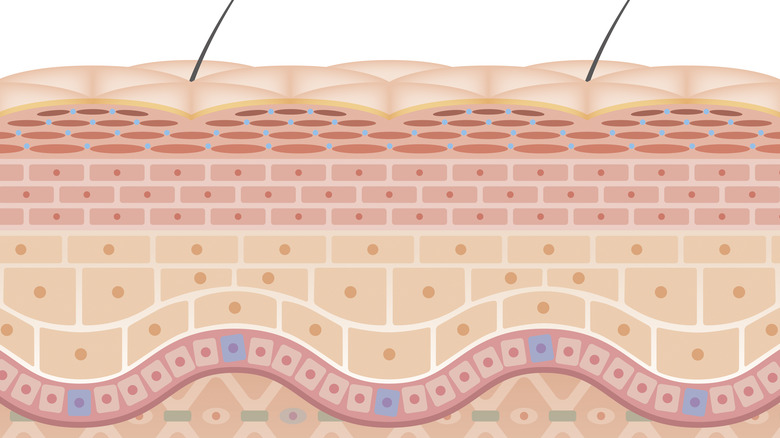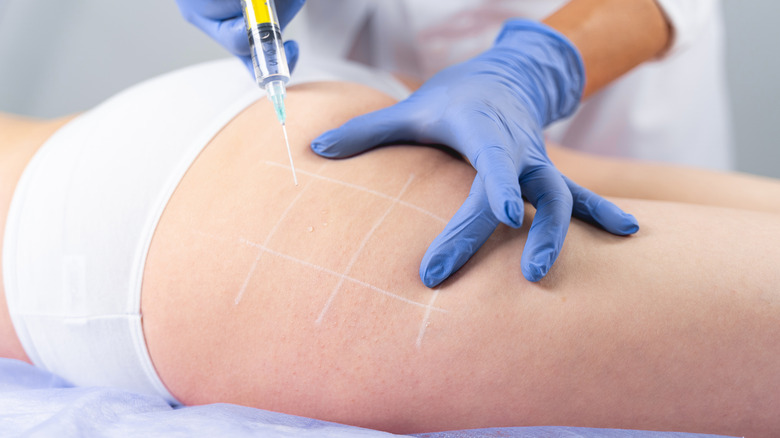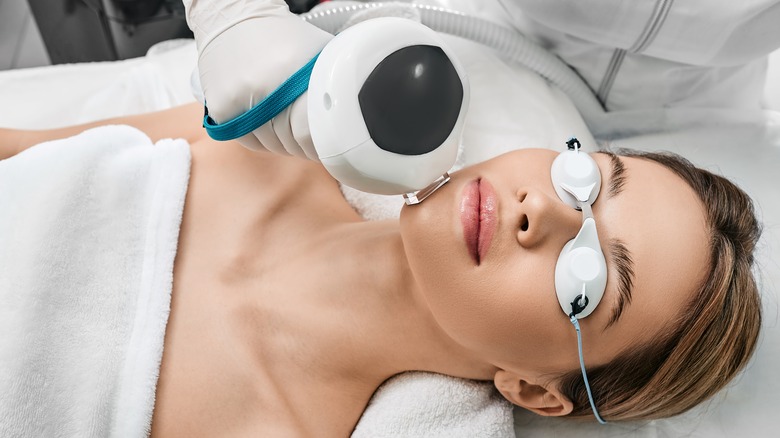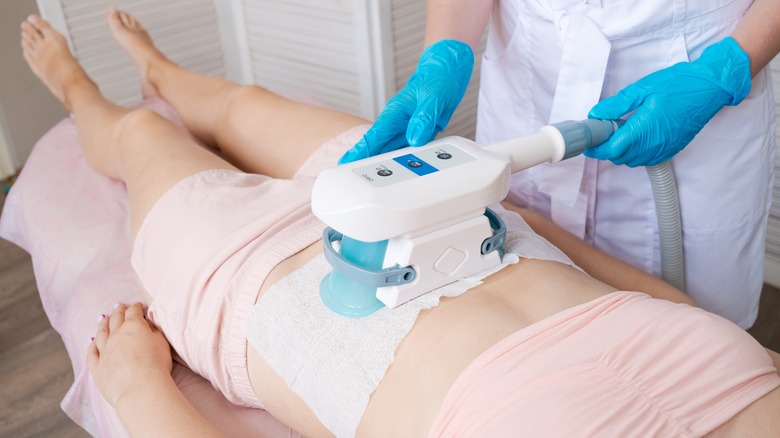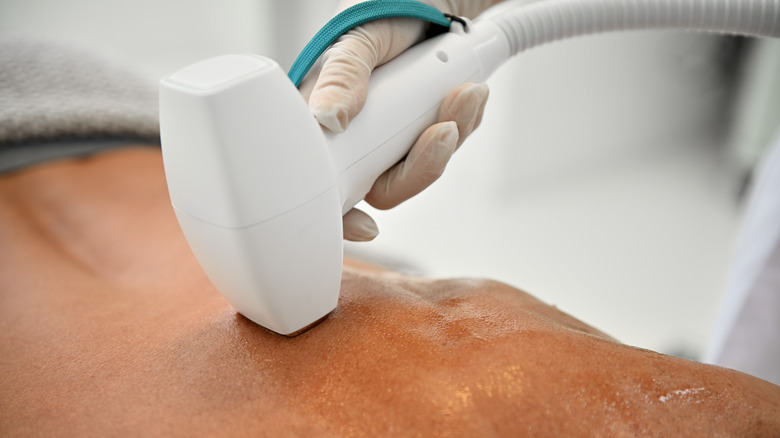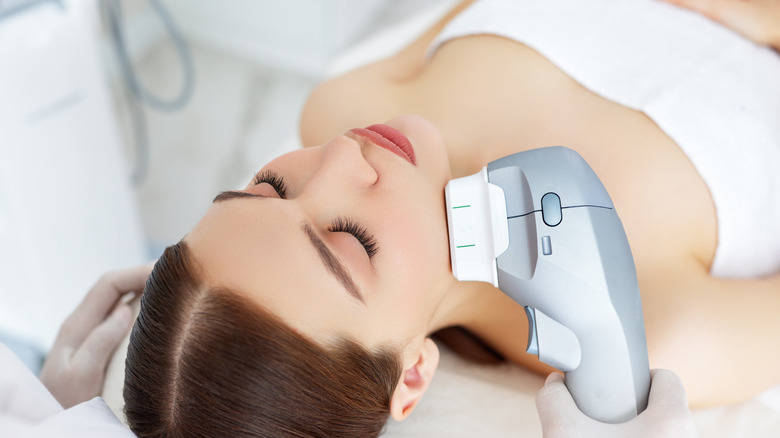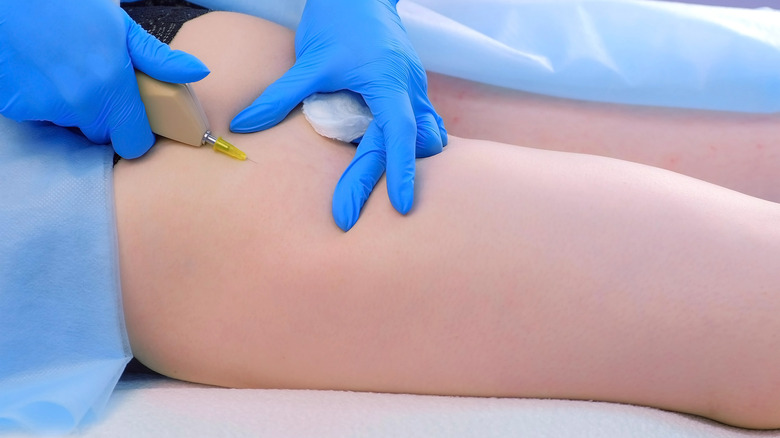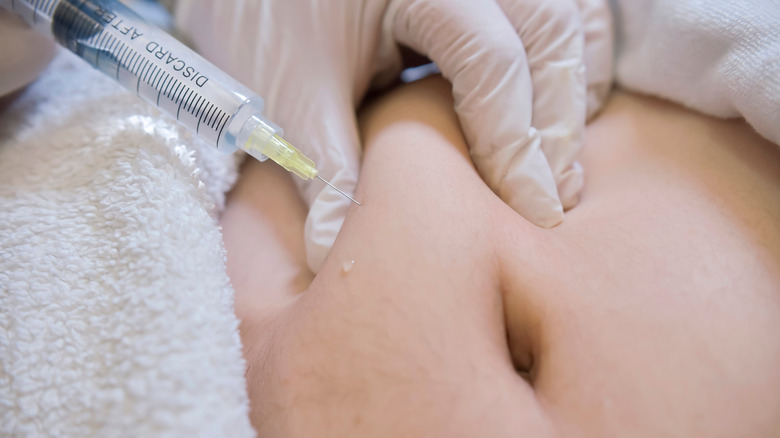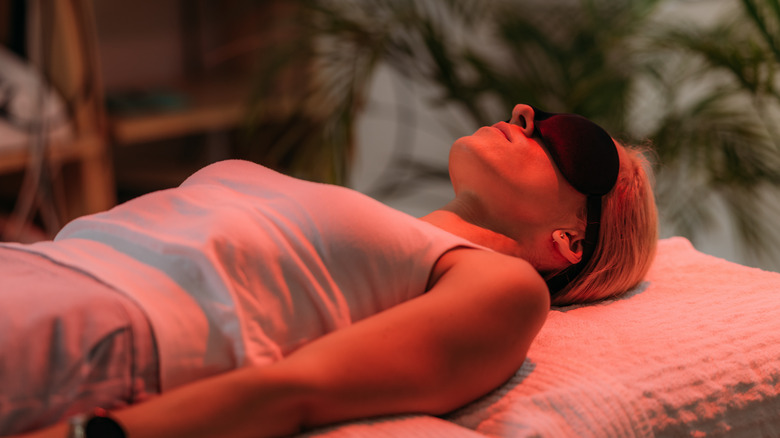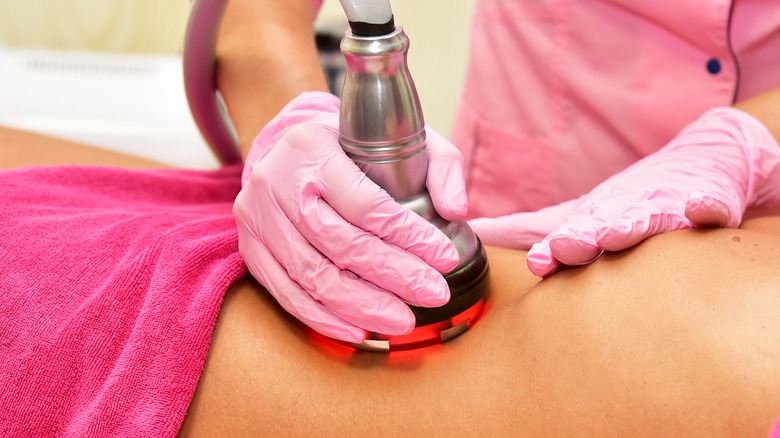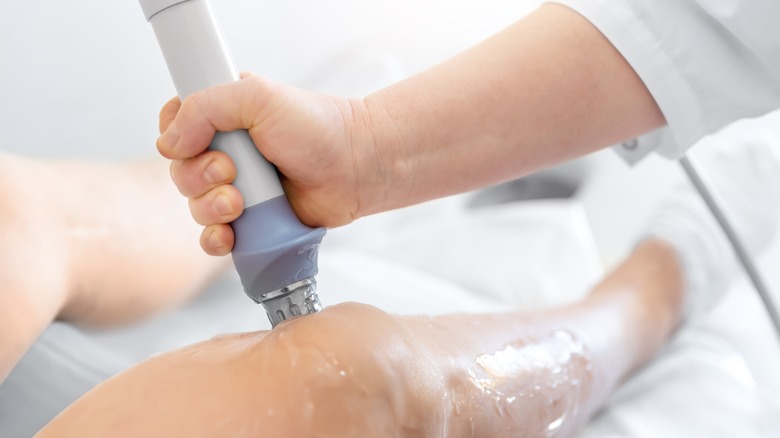The New School Of Cellulite Treatments: How Do They Stack Up Against Dimples And Texture?
Many adult women suffer from cellulite: According to a 2020 study in Aesthetic Surgery Journal, around 85-90% of women will experience it at some point in their lives. It can make us feel conscious about our bodies, and knowing what treatment works best can be tricky. Fortunately, several new therapies are in the works that are far more effective than the kinds you might have encountered. But before we get into these, it's important to know what cellulite is, so you can judge what will work best for you.
Under our skin, we have a layer of fat cells that help cushion our organs and keep us insulated. Within the layer where these fat cells sit are fibrous strands called fibrous septae. You can think of these as elastic bands that make sure everything stays in place, running through our fat layer and connecting our skin layers to our muscles.
With cellulite, because the bands pull the skin down over the layer of fat, the fat layer gets unevenly distributed and pokes through the skin. This can create a bumpy or dimpled surface on the skin. To improve the appearance of our skin texture and reduce cellulite, we have to find ways of loosening the fibrous strands and strengthening the skin layer so that the skin can flatten out. This is where cellulite treatments come into play.
Stages (types) of cellulite
There are three key stages (or types) of cellulite based on the extent of severity: Grades 1, 2, and 3 (there is also technically a grade 0, which is where you have no signs of cellulite, but it's less relevant here). The grades were originally designed by F. Nürnberger M.D and G. Müller M.D. in the '70s as a way to help doctors recognize and classify cellulite in a clinical setting but have since become standard in cellulite diagnosis.
Current research in the book "Skin Diseases in Females" describes grade 1 as skin that looks flat when standing or lying down. However, dimpling becomes more noticeable when we apply pressure to the skin. This is also known as flat cellulite. It is less severe than other kinds and may be remedied by non-invasive or topical treatments, or cellulite removal creams, as opposed to surgery. For grade 2, the dimpled appearance of cellulite is apparent when standing but not lying down. It's sometimes compared to an orange peel and is at the moderate end of the cellulite scale.
Lastly, there is grade 3, where cellulite can be seen both standing and lying down. The dimpled areas might be greater than 1 centimeter in diameter, appearing more elevated on the skin's surface. As the most severe level of cellulite, some might consider invasive or more active treatment methods.
What causes cellulite?
Cellulite is a complex condition influenced by a number of factors, including genetics, structural, circulatory, hormonal, and inflammatory aspects. For instance, the Journal of Dermatologic Surgery highlights that cellulite may affect women more than men because of the anatomy of their skin. Women have larger cell chambers where fat cells are stored in the skin. Moreover, we see in women's skin that the fibrous strands we mentioned earlier are arranged vertically between fat layers, whereas men's fibrous strands are actually diagonal, crisscrossing between skin and muscle layers, which likely gives a more even texture to their skin.
Interestingly, age-related changes in the skin don't affect the development of cellulite. However, hormones such as estrogen, which play a key role in the female reproductive system, can contribute to cellulite. As you may know, our body produces less estrogen as we age. When this happens, we may see effects on the lymphatic system.
The lymphatic system is responsible for circulating and draining fluids around the body, but surprisingly, research in the Journal of Cancers points out only female hormones affect these functions. So, hormonal issues may cause an accumulation of fluids in the spaces between the lymphatic and blood vessel systems, producing changes that favor the development of cellulite by hindering the exchange of particles between the systems. This results in the slowing or stopping of the flow of fluids in the body and drives cellulite formation.
Treatments: Enzyme therapy (CCH)
One of the most current and exciting developments in cellulite treatment is the use of collagenase clostridium histolyticum, or CCH for short. CCH is an injectable enzyme that has the ability to target fibrous bands within our skin. Specifically, these enzymes have been shown by a 2019 study in the Journal of Dermatologic Surgery to break down specific areas of collagen, such as the fibrous bands in our skin, which are collagen rich. As a result, the CCH can relax the tension in the skin that causes cellulite dimpling.
In fact, the research showed significant cellulite improvement over the course of roughly a month and a half (43 days) of treatment. And this was not the only study to observe this result. A 2021 study in the Journal of Dermatologic Surgery found that CCH was both safe and effective in the treatment of cellulite. In particular, they noted when we compare CCH treatment to invasive surgeries, most of the reported post-treatment injuries were related to bruising at the injection site with no major adverse reactions.
If we contrast this with invasive surgery, even with those with well-established safety procedures, we see that there are far more risks involved (per "Minimally Invasive Aesthetic Procedures"). For instance, accidental or improper surgical incisions can actually worsen the appearance of skin unevenness. And even when successful, patients are required to wear compression clothing for up to 30 days just to minimize bruising.
Rapid acoustic pulse therapy (acoustic subcision)
There is a way scientists can now activate tissues at a cellular level without a single cut. Through a series of rapid pulses, rapid acoustic therapy is a technique designed to penetrate the skin using sound waves. With this treatment, there is no bruising or downtime for surgery, and you may see a number of other health benefits, such as improved cell regeneration and improved lymphatic drainage (per Dr. Daniel Murray).
Clinical trials shared in the Journal of Lasers in Surgery and Medicine suggest that the treatment works because the acoustic pulses can disrupt the fibrous strands between fat cells, which relieves the tissues protruding through the skin. It also may have an effect on the loss of elasticity in the skin, resulting in a sagging or wrinkled appearance.
As we age, our skin loses collagen and elastin, which are the proteins responsible for maintaining the skin's elasticity and firmness. It's possible the rapid acoustic pulses may stimulate the production of new collagen, leading to an improvement in skin laxity (loss of elasticity). As evidence for these effects, a 2022 report in The PMFA Journal shared that patients could see reduced cellulite appearance up to three months after treatment.
Fat freezing (cryo lipolysis)
Fat freezing has been around for a while. Just like the name implies, cryo lipolysis (cold fat dissolution) can cause the death of fat tissues. And as we know, part of the problem with cellulite is that we have an uneven distribution of these tissues under our skin. By discriminatingly applying cold to areas of cellulite, fat freezing can help to reduce fat buildup without damaging the skin.
Specifically in the treatment of cellulite, fat freezing may have a skin-tightening effect. One part of the cellulite dilemma is the strength of the layer of skin (called the dermis) in resisting the pull of the fibrous bands binding them to the muscle. According to older studies in the Journal of Dermatologic Surgery, researchers demonstrated that fat freezing has consistent results in improving skin tightness and reducing the appearance of cellulite.
What's interesting is that these effects go further than just how the skin looks. In fact, using ultrasound technology, scientists in a 2021 study published in the Journal of Cosmetic Dermatology tried to uncover just what was happening during the freezing treatment and found that, in addition to stimulating wound healing and collagen production, the collagen itself became more ordered and structured. They suggest this might be why we see a reduction in cellulite and increased skin tightness.
Radio wave therapy
Radiowave therapy uses a specific type of frequency called a monopolar (meaning one pole) radio wave frequency (MRF), which has the ability to use electrical energy within skin tissues to generate heat. As these tissues become heated, they can stimulate collagen production and minimize fatty tissues. And, as we saw above, the increased production of collagen helps to improve skin tightness and overall appearance.
In fact, in testing published in the Egyptian Journal of Hospital Medicine, clinicians found that using this therapy significantly reduced cellulite, suggesting that heat had an interesting effect on the sympathetic nervous system (the nerves which control fight or flight response). MRF excites this system, boosting adrenaline in the body, which has the effect of making the body burn fat faster to release energy (for instance, if we need to escape, our body needs energy to do this). And this helps to shrink the fat layer, thus improving cellulite appearance.
What's also interesting about MRF is how it improves upon previous cellulite treatments such as Endermologie, a well-known lipo-massage device. In research published in the Pakistan Journal of Medical & Health Sciences, MRF was found to be more effective than Endermologie. This is likely due to the fact that MRF is able to boost collagen more efficaciously than massage. Endermologie, while non-invasive like MRF, takes a mechanical approach, massaging the skin to reduce fat tissue buildup, but it's uncertain to what degree it can affect cellulite at a cellular level.
Microwave therapy
Where radiotherapy employs the use of long-wave frequencies, microwaves are somewhat shorter but carry more energy. And microwaves are able to perform a similar role in invasive procedures but without surgery. While the research doesn't seem to indicate which therapy works better, it appears to work the same way.
The high-energy microwaves heat our fat cells, which triggers a process called complete metabolic macrophage adipolysis. This, according to a review in Frontier in Immunology, is when white blood cells, also known as macrophages, play the role of reducing inflammation and tissue repair. In order to do this, the macrophages convert fatty acids (the building blocks of our fat cells) into energy.
The heat triggers inflammation of our fat tissues. As a result, the fat stored under our skin gets used up as a response to macrophages looking for energy to reduce this inflammation. And as further research cited in the Journal of Clinical Medicine on microwave therapy explains, this leads to less fat tissue, improving skin texture, or appearance, of cellulite. Overall, they found microwave therapy is an effective means of treating cellulite safely without damaging the upper skin layers.
Carboxytherapy
Carboxytherapy treatment has been used for almost 100 years (according to the Journal of Cosmetic Dermatology). As you may know, oxygen is the fuel that gives every cell in our body the energy to carry out tasks needed to live. Carbon dioxide (CO2) is the waste product that our bodies emit after performing the functions that it needs. But what you might not have known is that there is a complex balance between the two, also known as the Bohr effect. Put simply, the Bohr effect is a dynamic within our cell tissues that allows our body to recognize when more oxygen is needed — namely, when CO2 levels rise, this signals our body to release more oxygen.
Carboxytherapy takes advantage of the natural response to increased CO2. By injecting CO2 into the skin, it triggers the Bohr effect, and we get more oxygen, stimulating the cells to release growth hormones and rejuvenating cells while simultaneously using up fatty acids to fuel this work. The CO2 is processed through our body with other forms of waste, such as being expelled from our lungs.
As a cellulite treatment, this has many benefits. According to a 2023 review shared in the Journal of Cosmetic Dermatology on the role of carboxytherapy, it can help to stimulate collagen, strengthening and tightening the skin against pulling from our fibrous bands. It also assists in reducing fatty tissue deposits and helping to even out the appearance of cellulite across the skin's surface.
Derma filling (CaHA)
Derma filling is a cellulite treatment where a substance is injected into the skin to fill cavities or dips in the skin, providing a more even surface. While it can be useful in treating a number of aesthetic issues without the need for surgical treatment, it does mean putting a foreign substance in your body, which can cause poor reactions in some.
However, one treatment, in particular, has been making waves in the medical world for its efficacy and safety — CaHA, also known as calcium hydroxylapatite. Research in the Journal of Oral and Maxillofacial Surgery highlights CaHA ad a well-established collagen stimulator, but because of recent innovations in the application of the technique through hyper dilution (thinning out the solution), it has been found to produce long-lasting effects in skin tightening and improving the texture of skin.
In fact, a 2020 study shared in the Dermatologic Therapy Journal on the use of hyper-diluted CaHA, reported a significant improvement in cellulite after treatments. They also establish through the study that the refined version of CaHa is safe with minimal adverse reactions whilst maintaining high satisfaction rates in patients. And this is just one example among numerous studies that have come out in the past year.
Combined light therapy
Light therapy as a cellulite treatment has been around since the '90s. The treatment, also known as intense light therapy (IPL), uses a range of colors within the visible light spectrum to target areas of cellulite safely. IPL therapy works in treating cellulite by using light to trigger increased cell metabolism, helping to rejuvenate skin and promote tissue rejuvenation.
However, recent research seems to suggest that while IPL might be useful for cellulite, it is less effective than other, more aggressive forms of treatment. As a recent review in the Journal of Cosmetic Dermatology points out, where results for IPL remain inconclusive, a newer light treatment called low-level light therapy (LLLT) has shown clear evidence for reducing cellulite.
Like IPL, LLLT also stimulates increased cell metabolism and healing. It uses low levels of red light or near-infrared light, which appears to trigger a series of cellular responses in our cell tissue that promotes collagen production and skin tightening. In a recent study of LLLT for cellulite, researchers found that in combination with anti-cellulite gel, LLLT could achieve long-lasting results in reducing the appearance of cellulite.
Vibrotherapy
Vibration therapy, also known as vibrotherapy, is a type of physical therapy that involves the use of mechanical vibrations to stimulate different parts of the body. The therapy can be administered through a machine, handheld device, or by standing on a vibrating platform, though research in the International Journal of Environmental Research and Public Health suggests that whole-body vibrotherapy is less effective than the localized kind.
Vibration therapy works in treating cellulite by improving blood flow, which over time helps to distribute fat more evenly as the blood spreads across fatty tissue areas (per Dr. Graeme Blennerhassett). The vibration also helps to stimulate the circulation of this blood around the muscles and connective tissues, which can improve the appearance of cellulite by toning the skin and reducing the appearance of dimples.
And the research seems to support this — a 2019 study in the Journal of Evidence-based Complementary and Alternative Medicine shows vibrotherapy to be effective, achieving complete cellulite remission among 40% of low-level cellulite sufferers and an improvement in skin appearance for 60% of those with moderate cellulite. They further found that one of the reasons vibrotherapy could be particularly effective for some was that if they had an underlying circulatory issue, it helped to improve circulation, which in turn improved cellulite.
Shock therapy (ESWT)
Shock therapy, also known as Extracorporeal Shock Wave Therapy (ESWT), is a non-invasive medical procedure that uses high-energy wavelengths to treat various medical conditions. According to a 2019 study published in Dermatology Research and Practice, ESWT can lower the amount of a substance called Malondialdehyde (MDA) in the fat tissue. High levels of MDA indicate that our tissues have an excessive level of unstable molecules called free radicals that damage cells and tissues.
In the case of cellulite, people often have high MDA because of these free radicals in their fatty tissue leading to inflammation. This can cause a build-up of toxins and waste products in the fat cells, which can contribute to the development of cellulite. Reducing the levels of MDA through ESWT therapy helps to alleviate some of the free radical damage and inflammation associated with cellulite, leading to an improvement in its appearance. However, more research is needed to determine the treatment's long-term effectiveness and any potential side effects.
It's also important to note that ESWT is not recommended for pregnant women, people with blood-clotting disorders, and people taking blood-thinning medications. Like everything else on our list, it's always best to consult with a healthcare professional to determine if cellulite therapy is right for you.
